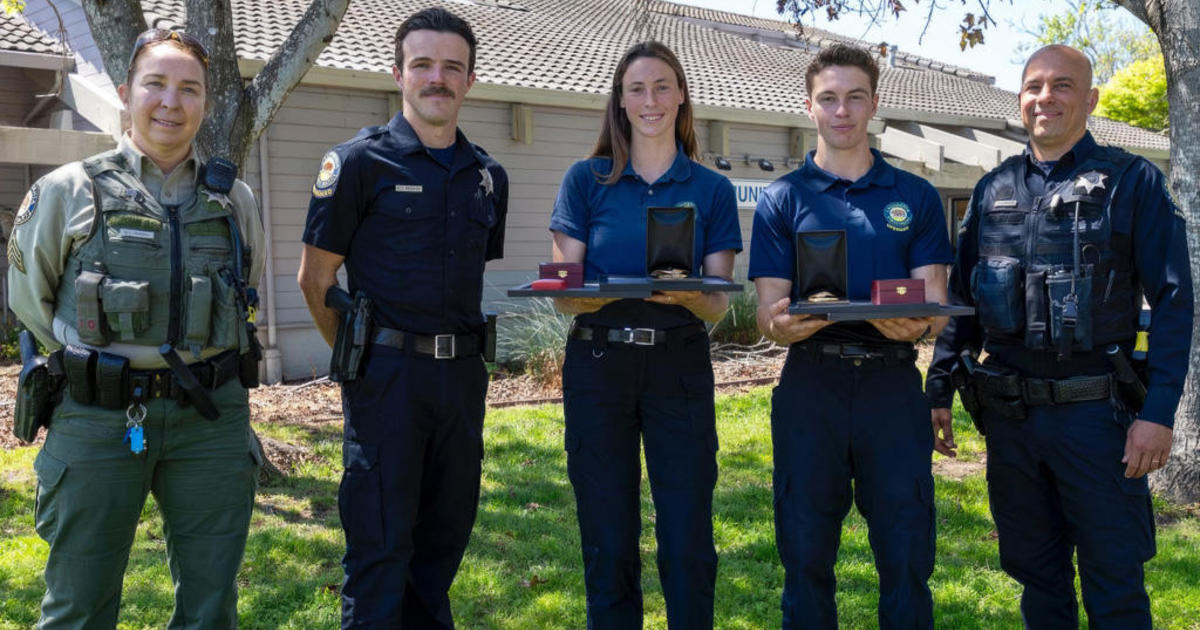Newsom Announces New COVID-19 Modeling Website, Open-Source Tools For 'Citizen Scientists'
SACRAMENTO (CBS SF) -- Gov. Gavin Newsom on Thursday announced a new COVID-19 modeling website as well as new open-source tools designed to help California residents understand the data informing local health departments and empower what he called "citizen scientists."
The governor introduced the new coronavirus modeling website found at calcat.covid19.ca.gov, as a way for residents to see the raw data that is driving the decisions of state and county officials with full transparency.
Newsom pointed out that the COVID-19 pandemic modeling would continue to guide the state's future actions.
"The future is not just something to experience. We are not victims of fate. We can manifest the future. It's not something in front of us, it's something inside of us," explained Newsom. "I say this often; it's decisions, not conditions that determine our fate and our future. In the State of California, we are proof of that."
The new website features three sections: a "Nowcast" section that provides the most current information on how fast COVID-19 is spreading in the state and by county; a "Forecasts" section that provides short-term COVID-19 forecasts in the state and by county; and a "Scenarios" section that projects the possible long-term impacts under different scenarios and responses to COVID-19, again for the whole state and by county.
Newsom also announced the launch of the California COVID Assessment Tool platform that provides tool prototypes to county health partners to refine insights and knowledge. Newsom said by sharing the code, the state would hopefully spur collaboration with other states and researchers.
"We want to open up our site to 'netizen-tists' ... of citizen-scientists, people that are out there doing coding every single day," said Newsom. "We want to give them access through an open-source platform to all of the available data that we have, that I have, that our health professionals have, in a way that we don't believe has been done before anywhere in the United States. This is a deep dive for transparency and openness. This is a new resource that we are making available today."
Newsom noted that the open-source tools would empower residents and hopefully tap into the expertise of Californians from multiple fields to help the state develop new models and ways of looking at the raw data.
"We're making available the capacity for people to participate in building our modeling capacity. Because one thing we recognize is the limitlessness of the capacity of expertise and talent that resides throughout the State of California, throughout the United States, and for that matter throughout the rest of the world," explained Newsom. "We're opening up to mathematicians, we're opening up to people that are experts in AI, opening up to our researchers and scientists and our Nobel laureates and our partners across the spectrum - including, again, citizens that just have an expertise that hasn't been tapped. They haven't been asked, or they haven't availed themselves to the opportunity to engage."
Secretary of the California Health and Human Services Dr. Mark Ghaly said adding open-source citizen data to the state's modeling efforts will help refine decision making at a local level.
"The exciting opportunity today is to not just have statewide information, but as we built our understanding of the different models that you heard the governor mention from across the nation, to be able to use those at a much more local, county level," explained Dr. Ghaly. "We know that county health officers and health directors are using this information on a regular basis, not to sort of support their opinions, but to really guide their decisions that are driving some of our actions as it relates to our response to COVID-19."
Earlier in the Thursday update, the governor emphasized that the state was still coping with the first wave of the coronavirus and that California residents needed to understand that the current spike in COVID-19 was not part of a second wave.
Newsom noted that the number of new cases confirmed in the past 24 hours dropped significantly from over 7,000 cases to 5,349 cases, but said the reduced number was a still troubling volume of cases. The state had a 5.6 percent positivity rate in the past 7 days.
The state's hospitalization rate continued to climb on Thursday, hitting 32 percent over the past 14 days with 4,240 patients hospitalized with COVID-19.
The total number of ICU patients in the state also climbed slightly over the past 24 hours, Newsom said. The 1,306 ICU patients marked a 3 percent increase from Wednesday. There was a 19 percent increase in ICU patients over the past 14 days, according to the governor.
There are 11 counties the state has on a watch list for capacity, including Santa Clara. The county still has some cushion with 41.95 percent of acute care beds open and 46 percent of ICU beds open.
Dr. Andra Blomkalns, the head of Stanford's Emergency Department, said there is potential for problems after the Fourth of July.
"As holiday week or weekend approaches us, people may not shelter in place and may not socially distance themselves quite enough. We've already seen an uptick in COVID cases, pretty substantially and that includes people who are not so ill and very ill," Dr. Blomkalns told KPIX 5 via Zoom.
She calls the next few weeks a critical juncture for abiding by the statewide mask mandate and social distancing.
"I know it has been a long time and it has been very frustrating and I myself am at wits end about wanting to go outside without a mask and get together with my friends," said Dr. Blomkalns. "But this is important, I really feel as though the fate of our region and our nation over the next few weeks, if we can get a handle on this is completely within the hands of people at home."
Andria Borba contributed to this story.



